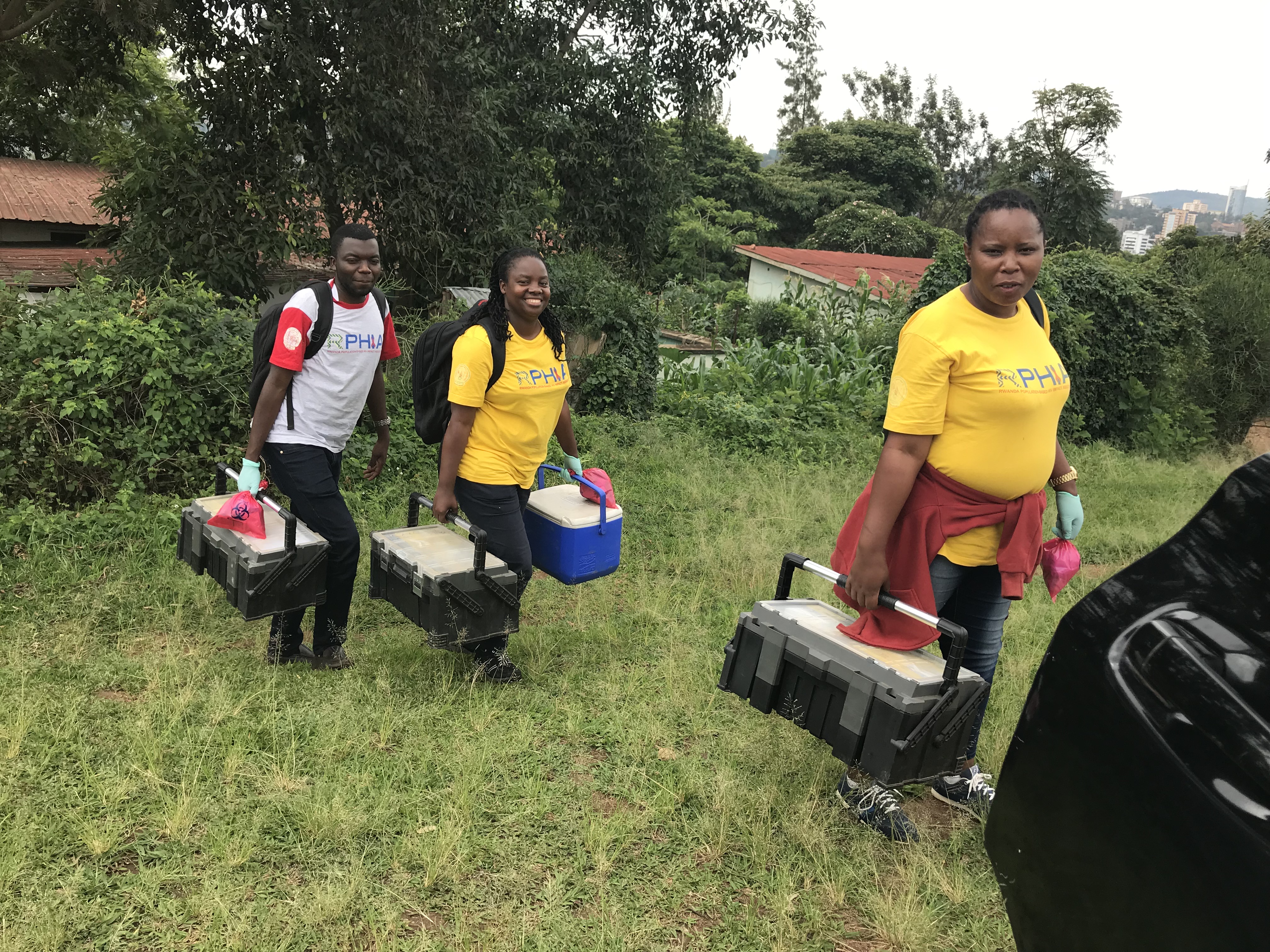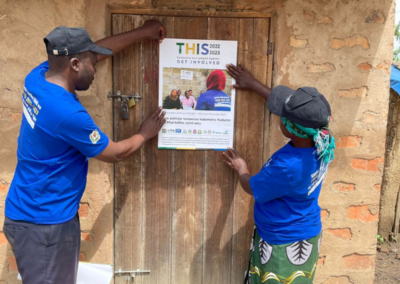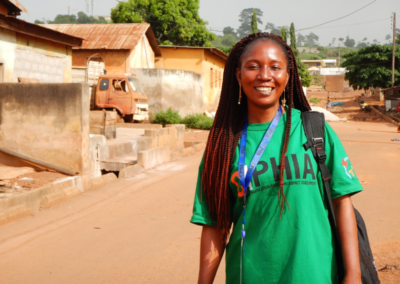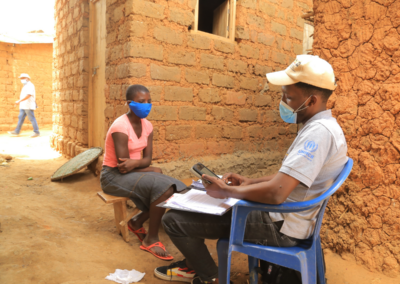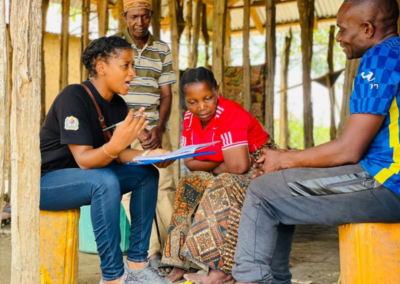The Government of Rwanda, the U.S. President’s Emergency Plan for AIDS Relief (PEPFAR), the U.S. Centers for Disease Control and Prevention (CDC), and ICAP at Columbia University released new data today that demonstrate Rwanda’s remarkable progress toward achieving HIV epidemic control — particularly in attaining high levels of linkage to treatment and viral load suppression among people living with HIV.
Results from the Rwanda Population-based HIV Impact Assessment (RPHIA) show that 76 percent of all HIV-positive adults, including almost 80 percent of HIV-positive women, have achieved viral load suppression, a widely used measure of effective HIV treatment in a population. This surpasses the Joint United Nations Programme on HIV/AIDS (UNAIDS) target of 73 percent by 2020. Rwanda has made tremendous progress by reaching or exceeding the UNAIDS 90–90–90 targets, particularly among women, and nationally by attaining 84–98–90 among adults.
The survey findings reflect the degree to which Rwanda’s national HIV programs and policies have contributed significantly towards reducing new infections and ensuring people living with HIV are linked to and sustained on HIV treatment. The RPHIA results will also inform the future direction of Rwanda’s efforts to reach epidemic control by closing identified gaps.
“RPHIA preliminary findings highlight the results of national leadership, citizen participation and strong partnerships that characterized the fight against HIV in Rwanda,” said Rwanda Minister of Health, Diane Gashumba, MD. “I am happy with our progress towards achieving 90-90-90 UNAIDS global targets. The remaining gaps identified will require more efforts and sustained collaboration with our partners – I commend the very valuable support from PEPFAR, CDC, ICAP and other research institutions in Rwanda involved in the design, implementation and analysis of these data. We look forward to disseminating the RPHIA results in Kigali next month.”
“We congratulate Rwanda on these remarkable results,” said Ambassador Deborah L. Birx, U.S. Global AIDS Coordinator and U.S. Representative for Global Health Diplomacy. “They prove what’s possible through the combination of political leadership, proactive policies, data-driven programs, and community engagement—all essential ingredients for reaching HIV/AIDS epidemic control.”
“Congratulations to the government and people of Rwanda for their dedication to stopping their HIV epidemic and linking more than 97 percent of those diagnosed into care. The success they have achieved in surpassing the UNAIDS 2020 goal demonstrates the power of effective HIV treatment and care,” said CDC Director Robert Redfield, MD. “CDC remains committed to supporting Rwanda and other nations as they respond to the HIV pandemic and save lives.”
“Rwanda has already reached and exceeded the global 2020 HIV targets, and this is a testament to the Government of Rwanda’s commitment to confronting its HIV epidemic” noted Wafaa El-Sadr, MD, MPH, MPA, Director of ICAP. “The RPHIA results illustrate the importance of population-based surveys in measuring the progress and impact of national HIV programs and policies.”
From October 2018-March 2019, RPHIA reached over 11,000 households across the country, surveying more than 30,000 adults aged 15-64 years, and over 9,000 young adolescents aged 10-14 years. The survey provided home-based HIV testing and counseling services, with return of results and linkage to care for those who tested HIV-positive.
The key results released today include information on the percentage of people living with HIV (prevalence), the number of new HIV infections occurring each year (incidence), and the percentage of people with low levels of virus in their blood (viral load suppression), described by age, sex, and geographic variation.
Some key findings of the RPHIA 2018-19 survey include:
- HIV prevalence among adults, aged 15-49 years, was 2.6 percent, and 3 percent among those aged 15-64 years indicating that approximately 210,200 adults in Rwanda were living with HIV
- HIV prevalence was higher in women (3.7 percent) than men (2.2 percent)
- HIV prevalence was 1.9 times higher in urban areas compared to rural areas
- The annual incidence of HIV among adults was 0.08 percent, corresponding to approximately 5,400 new cases of HIV per year in Rwanda
- Among all adults living with HIV, 76 percent had suppressed viral loads – 79.1 percent among women and 70.5 percent among men.
- In relation to UNAIDS 90-90-90 targets, when combining self-reported and laboratory data, results indicated:
- 83.8 percent of adults living with HIV were aware of their status, based on self-reporting or the detection of antiretrovirals (ARVs) in participants’ blood samples
- Of adults who knew their status, 97.5 percent were on ART, based on self-reporting or the detection of ARVs
- Of adults who had detectable ARVs or reported current use of ARVs, 90.1 percent had viral load suppresion
The Rwanda Biomedical Center will publish the RPHIA summary sheet on October 22 and it will be available on the PHIA website at https://phia.icap.columbia.edu/coutnries/rwanda. The final report will be available in the coming months.
For more information about the PHIA project, please visit: https://phia.icap.columbia.edu
Contact Information:
Dr. Sabin Nsanzimana
Director General
Rwanda Biomedical Centre (RBC), Govt. of Rwanda
Email: sabin.nsanzimana@rbc.gov.rw
Dr. Veronicah Mugisha
Country Director, Rwanda
ICAP at Columbia University
Email: vm2208@cumc.columbia.edu
Apala Guhathakurta
Communications Officer, PHIA Project
ICAP at Columbia University
E-mail: ag4176@cumc.columbia.edu
David Haroz
Communications Director
PEPFAR
Email: harozd@state.gov
CDC Media Relations
Email: media@cdc.gov
Phone: +1 404-639-3286









